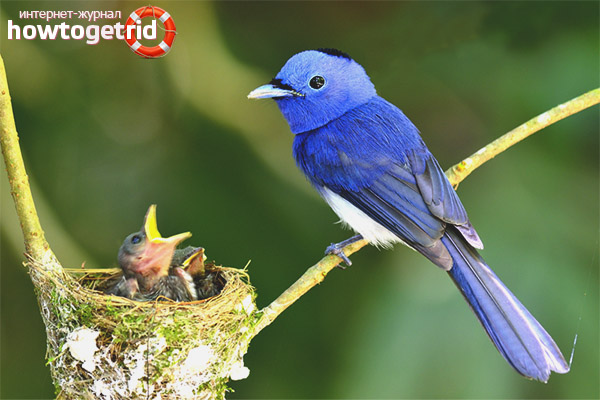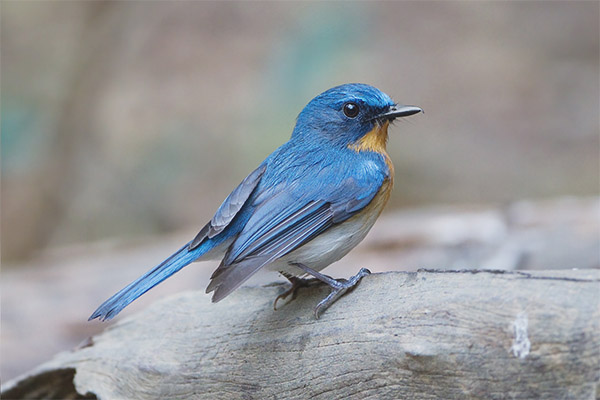The content of the article
Walking through the Far Eastern taiga, one can hear many melodious charming melodies published by birds. It doesn’t leave indifferent and flooded melodious “C, C, CZ Cirquek” performed by a small blue-black bird called the Blue Flycatcher.
Appearance
The blue flycatcher is a small bird the size of a sparrow, and it looks like a resident of urban quarters. After all, she comes from a passerine squad. In the family of flycatchers, to which this feathered one belongs, several species are the gray flycatcher, the spotted flycatcher, silver, azure ... Among this variety, the blue flycatcher is the largest representative.
The body is 18–20 cm long, the weight is a little more than 20 grams: the male has more than up to 24 grams, the female is slightly lighter - 22 grams. They differ from each other not only in body weight, but also in color. The outer plumage of a male of rich blue color - both the back, and the head, and the wings look as if they are doused with azure paint.A resinous color prevails on the neck and chest, the belly is blindingly white. Beak and legs dark.
The female has blue wings only. From above plumage is dark brown, from below feathers of light brown shade. Paws with beak are light gray. Paws are small, but tenacious, with their help they can be conveniently and comfortably placed on any branch. Wingspan - about 30 cm.
Spread
Wintering
The blue flycatcher is a heat-loving bird, does not tolerate frosts. As soon as the cooling starts, the thermometer rapidly falls to zero, the birds gather in a flock and go to warmer edges.This action takes place at the very beginning of autumn, in the first days of September. Winter is spent in the countries of Indochina and Indonesia.
Nutrition
The main component of the diet - flies. The flycatcher is so named because it loves them! Eats and other insects - beetles, worms of all kinds, caterpillars, catches dragonflies, grabs butterflies, eagerly eats larvae. Occasionally, spiders are prey, but this is not the most favorite type of food. Like most birds, food gets during the flight, but if there is no such opportunity, collects food from the trees. On rainy and unsuccessful days, when it is not possible to get insects, it goes to grass vegetative food, filling the stomach with berries and other forest fruits.
Nesting and breeding

Blue flycatchers of partners choose for a long time and keep them loyalty. True, some males can live simultaneously with two females living on its territory. During marriage games and courtship, the male performs a beautiful soulful song, with the help of which he finds his life partner.
Flycatchers make their nests on tree branches or on stumps, using indentations and holes in them.Birds living in the mountains nest on rocky eaves and steep banks. Construction and arrangement of the nest is engaged in female. On the construction are branches, pieces of bark, roots, grass, last year’s leaves, bark. The bottom of the resulting house is carpeted with down, elk or cow hairs found in the forest, both our own and others' feathers and pieces of moss. The laying in which usually 5-7 white, decorated with red dots of testicles is done, and incubation begins. The female sits on eggs alone, without the participation of her spouse, for about 14 days, and the male all the time is looking for and delivering food.
Two weeks later, the chicks appear, they constantly demand food, and for a whole month the parents are only busy in trying to feed the children. After about 26-29 days, the chicks get up on the wing and fly away, and the birds begin to get ready to do another laying.
Interesting Facts
Often, passing through the taiga, you can see a bird sitting vertically and tensely looking for prey.
When feeding the babies, adult birds bring food to the chicks about two hundred times a day. They are able to destroy several kilograms of flies and other insects, bringing great benefits to man.
To see blue flycatchers in the field or in the garden is a good sign - it means that all the surrounding vegetation will be cleared of small flying pests.











To send